Like clock-work, Fitbit has released a new smartwatch for the fall and upcoming holiday buying season. However, with the new Fitbit Versa 2, they’ve also announced a clear shift in strategy away from “episodic device sales ”, as CEO James Park put it, towards a premium services revenue model. Atop all that, they’ve also announced a new budget-friendly smart weight scale at a mere $49 – by far the least expensive mainstream brand on the market.
I’ve got my hands on the new Versa 2, err…actually, it’s on my wrist – but either way, I’ve been giving the new features a whirl. This includes the new built-in Amazon Alexa functionality, new Spotify support, and perhaps most important: The always-on display! Yup, Fitbit has returned to their roots with a display that’s always showing you the time. Who would have thought, a watch that you can actually see the display?
If you’re looking for the quick run-down of all the new features, then look no further than the play button below. I promise, you’ll like it. Or, at least find it funny.

With that, let’s get into all the new bits.
What’s New in Versa 2:
Above is the box for the stock $199 Fitbit Versa 2. It also comes in a few other colors. Most of the photos in this review I’ve used an extra accessory strap, because I’m highly bored of taking photos of black and grey watches these days.
In any case, we’ll get right into things, and there’s no better way to do so than a quick and efficient bulleted list of what’s new in Versa 2 compared to the previous Versa 1 I’ve reviewed. Here goes:
– Removed right side buttons, leaving only a single button (like the Versa Lite)
– Added Amazon Alexa (with microphone)
– Changed to AMOLED display
– Added new always-on display mode
– Sleep score is finally being released out of beta to the masses
– Added ‘Smart Wake’ – basically smart alarm clocks
– Added Fitbit Pay as a standard feature (previously was special edition only)
– Changed to a faster processor, to increase animations and responsiveness
– Added Spotify support (sorta)
– Added support for new Fitbit Premium
– A pile of new straps, including a RECCO avalanche beacon strap.
From the outside, the new Versa 2 doesn’t look terribly different than the original Versa. It’s still got a square-ish circle-ish shape (officially, this is actually called the ‘squircle’). Or, what the rest of the world calls rounded edges. However, the unit actually takes some cues from the Fitbit Versa Lite, in that they’ve done away with the two right side buttons – instead going to a singular button on the left (along with the touchscreen).
Speaking of that display, the unit uses a new AMOLED display screen. The screen is notable for a few reasons. First, it’s supposed to be more “brilliant and crispier” (honestly, seems about the same to me in most conditions), but more importantly – it actually allows you to enable an always-on display mode. As you may know, both the Fitbit Ionic as well as the Fitbit Versa/Versa Lite automatically turn off their screens the moment your wrist turns away. They then (in theory) automatically turn back on when you twist your wrist towards you.
However, with the Versa 2 you can enable a low-power always-on watch-face that’ll last about 2 days. Else, if you leave the defaults on (not always-on), it’ll get about 5 days of battery life. Historically speaking Fitbit is pretty spot-on with battery life estimates (in fact, usually a bit conservative). To enable the always-on screen you’ll simply swipe down from the top to access the new settings bar:
It’s there you’ll find a toggle for the always-on display:
Here’s the default lower power watch face you’ll get that’s always on:
Beyond that, as you can see, Fitbit has made some subtle UI changes, mostly around menus. The core experience is largely unchanged. If in always-on display mode, when you raise your wrist you’ll see the low-power time/date screen. To get to your main dashboard you’ll press the side button once:
And to access text messages and notifications, you’ll swipe down from the top:
Whereas to access your overall ‘Day’ in terms of health and fitness you’ll swipe up:
You can see your sleep here – which in my case includes a redeye transatlantic flight last night:
Starting in September, Fitbit will finally enable their long talked about Sleep Score. This is something that exactly one year ago they touted as being available in December (2018), which it kinda was to a limited beta. And then they closed the beta. Then they said it was coming soon. And eventually they basically stopped talking about it. Well, now it’s here. Unfortunately, it’s not quite yet showing up on my account. But here’s what it should look like once it does (via Fitbit):
The sleep score has three core components that are used to give you a score from 0-100%:
A) The time asleep
B) The amount of deep sleep and REM sleep
C) The restorative aspect
The restorative aspect is specifically looking at whether your resting HR (RHR) recovers and begins to decline over the course of a night. If it doesn’t, that indicates that you’re probably not getting good sleep, or enough sleep. Interestingly by the way, there’s a point in the amount of sleep you can get where it actually will detriment your score. Meaning, if you sleep for 12 hours, that’s not healthy either. The sweet spot according to Fitbit’s research division is about 7-8 hours.
The sleep score is free, and will come to all Fitbit devices with a heart rate sensor.
To help with getting up on time, Fitbit is rolling out Smart Wake. This is essentially a smart alarm clock that allows you to set a given time (such as 7:15AM), and then it’ll find the ideal window up to 30 minutes prior where you’re not in deep sleep. It’ll trigger an alarm at say, 7:02AM if it finds you’re in light or REM sleep, which means you’ll likely wake up easier. This is something that various products on the market have been doing for years, but most of the major companies have avoided for whatever reasons. Good to see it here.
Finally, on the sleep front, the company will start producing an estimate oxygen variation chart each night for your sleep, using the Versa 2’s sensors. Though the detail on this is a bit fuzzy. I’d caution I haven’t seen this yet in real-life, and last year they promised SpO2 related metrics that never surfaced. So we’ll have to see if this actually occurs.
Switching to something completely different – Amazon Alexa support built-in. While these days you can get Alexa support on basically any old microwave, there haven’t been a ton of mainstream wearables with it built-in. Fitbit has added a microphone to the right side of the unit to enable audio capture. You can disable this if you’d like.
To enable Amazon Alexa you need to authorize Fitbit and Amazon together in a pretty typical authorization process. It’s linked to your specific account, and takes specific steps to enable. Said differently: You don’t accidentally turn on this feature:
Once enabled, you can long-hold the left button down to access Alexa. You’ll ask it whatever you want, including adding things to to-do lists or buying that Uranium Ore (for realz) on Amazon. Whatever floats your boat.
You can ask it to create reminders and such:
If you ask it a question, it’ll respond back in text:
It does not respond back audibly. Just text. Also, it seems to take a while. This isn’t quick Alexa like on an Amazon Echo or such. I’ve never really been a ‘talk to my watch’ kinda person (even with Siri or Google), but I know some people are. Note, you can’t make phone calls with this. It’s just for talking to Alexa and asking her to do things. With Alexa though in thousands of devices these days (seriously, there’s an entire dedicated Amazon ballroom at CES filled with these devices each year), it’s likely we’ll continue to see it expand in the wearables space.
Next on the 3rd party integrations front is Spotify. Unfortunately, it’s not really what you want. Fitbit and Spotify have created a Spotify app that allows you to control Spotify on your phone, such as picking playlists or podcasts, and skipping tracks.
It does not allow you to offline store/cache your music on your Versa 2 (like their Deezer or native music apps do). Again, you must have your phone with you. Frankly, I don’t understand this – and I think it’s a huge swing and a miss for Fitbit (and Spotify). On the bright side, you can actually change the music destination from the app, so that’s kinda cool:
Though, in my testing the entire interaction took forever to take effect on my SONOS speakers. Maybe that’s just a non-final sorta issue.
Finally, Fitbit has created a pile of new straps, ranging in price from $29 up to $59. Some of these are newer sports bands that are more breathable, as well as new swankier straps that might match your wardrobe better. These are compatible across the Versa lineup.
Most interesting though is a new RECCO avalanche beacon/reflector strap. This is a brilliant type of partnership, even if it probably has limited practical market appeal. For those that often go into backcountry during the winter, you’ll certainly know the RECCO brand. Essentially it’s a passive avalanche beacon. That means that if you get stuck in an avalanche, someone with an active beacon can find you. You’ll see this often built into many skiing winter parkas (for decades now), along with apparently 150 other brands integrating them into products.
It’s a cool partnership, though honestly one that probably fits the Garmin outdoors market profile a bit better. Still, don’t discount Fitbit’s broad reach. Countless people skiing in the backcountry have Fitbit devices, and throwing something like this on is one more layer (literally) of protection.
Oh, actually one more thing. As for that optical heart rate sensor – it hasn’t changed from previous. Though, they have smoothed out the back a bit to make it slightly more seamless:
In my testing on a run yesterday, it seems to handle just like the Versa/Versa Lite did – more or less fine. It was a fairly steady run, so it’s not surprising that it handled well. As I work towards a full review in September, I’ll do interval runs and such like normal:
And remember, the Fitbit Versa 2 (like the Versa/Lite) doesn’t have GPS in it. Instead, it uses ‘Connected GPS’, which means it uses your phone for a GPS track. You don’t need to have your phone though to capture distance on a run/walk, as it’ll use the accelerometer if you want instead. However, for cycling you’ll need your phone to get GPS. You can upload to Strava as normal as well. Here’s an overlay against a dedicated GPS device – the Garmin FR935 in NYC’s Central Park yesterday. Purple is the Fitbit Versa 2, and teal is the Garmin FR935 (full data set here):
With connected GPS, you’re leveraging your phone’s GPS signal quality (iPhone X in my case), which can vary wildly. Further, apps – including Fitbit, often do various processing on that both in real-time and sometimes after upload. As you can here, the GPS track by the Fitbit/iPhone combo is a bit aquatic at times, though did handle slightly better going down the avenue into the city at the end.
Ultimately, you’re not likely buying the Versa 2 (or any other non-GPS smartwatch) for its GPS prowess. You’ll generally find it ‘good enough’ for a rough approximation of the GPS track. That said, the actual distances from both devices were very close – 8.38KM (Versa 2) vs 8.34KM (FR935).
Fitbit Premium:
Fitbit’s launching (another) new digital health focused subscription service. Mind you, this isn’t Fitbit’s first foray here. They’ve tried this over the past year or two, including with their acquisition of Fitstar back a number of years ago. The difference this time is that Fitbit believes they’re going for a more broadly appealing offering, versus doing something that was a bit too niche in both appeal and functionality.
However – perhaps more important than that is Fitbit’s CEO James Park’s remark he made at the outset of Fitbit’s media presentation, when talking about Fitbit Premium:
“This is an incredibly important launch, because we’re in the middle of a transformation of our business model from one that’s based on episodic device sales to one where we have a long term beneficial relationship with their customers.”
Translated: We need to stop being dependent on people buying new Fitbit devices and shift to a subscription revenue model. After all, it’s what all the cool kids are doing.
Fitbit says that 62% of their users either are already subscribed to health/fitness subscription services, or are ‘interested’ in doing so. Of course, I’m also interested in having Ben & Jerry’s magically deliver me free pints of ice cream each afternoon, but that doesn’t mean that’ll happen. Still, let’s talk about what they’re doing here. Their new $9/month (or $79/year) offering essentially has 7 main feature areas to it:
– Advanced Insights
– Sleep Guidance
– Guided Programs
– Dynamic Workouts
– Challenges (coming later)
– Health Reports (coming later)
– Health Coaching (not till next year, with an added cost)
Let’s run through them real quick. Note that since the service isn’t live yet, we’ll have to depend on slides for explainers here. First is the advanced insights. Fitbit’s taking their existing insights functionality and ‘personalizing’ it for you. Most of this stuff is pretty obvious, but the idea here is to tie together different metrics from heart rate to sleep. Making people aware that sleep is important for example, for lowering your resting heart rate. Or for making you more focused during your day.
That ties into sleep guidance, which gives you pre-bed checklists such as getting to bed at a certain time. Much of this is common in various free apps you see out there, or even in Apple’s Beddit platform.
Meanwhile the guided programs cover activity, nutrition, and sleep. They typically last a few weeks and are designed at keeping you on track and then tweaking themselves if you fall off the boat or overachieve. In the nutrition guided program you’ll target a specific calorie balance per day, and then use their food logging app combined with the data Fitbit has on your calorie expenditure per day to see if you’re trending towards that goal.
Whereas on the dynamic workouts they’ll leverage their existing Fitbit Coach bits to give you audio workouts (Cycling/Body Weight/Elliptical/Walking/Running/Stairs/Stretching/Total Body/Rowing), and will tweak the workout from session to session if you fail to achieve specific targets in the workouts.
There’s a smattering of new challenges tied into this as well, such as group-challenges where you work together as a group to achieve a given goal – such as walking a certain number of steps or active minutes (called ‘All for one’). Or another called ‘Fit Bingo’, which randomly generates ‘bingo cards’ with specific fitness oriented goals a person has to achieve. First person to get a row across wins. Essentially an extension of the social fitness gamification that Fitbit easily leads the industry on.
They’ve also got a new “wellness report” in the premium offering that you can export out for your doctor. This is mostly aimed at the annual physical check-in, but gives your doctor an overview of your tracked health stats from a Fitbit perspective.
Last but not least is probably the most interesting program – which is Fitbit’s ‘Health Coaching’. This piece will cost even more money, but the price hasn’t been decided yet. It’ll launch in a US pilot program later this year, with it rolling out more widespread in 2020. The idea with the Health Coaching is that you get a legit certified health and wellness coach with an actual name that you can reach out to and message with. That coach has access to your Fitbit data and can bonk you on the head when you fall off the boat, or can give you praise when you deserve a pint of ice cream.
Further yet, these coaches will be trained around weight loss & diabetes management, but can also reach out to various other health professionals as part of the service. All as part of your journey towards some specific achievement/goal.
It’ll be super interesting to see where this goes for Fitbit, and most importantly – the pricing. I could certainly see the likes of Garmin, or even Apple, going in this direction as well. With Apple’s continued and aggressive expansion into numerous paid subscription services, this would be a natural fit for the company as well.
Aria Air Smart Scale:
This section will be about as quick and brief as they come around here. Fitbit is launching their new Aria Air scale this fall, which will retail for $49. The scale will measure both weight and BMI, and then transmit that to the Fitbit app via Bluetooth Smart (not WiFi, like the more expensive Fitbit Aria 2 scale).
The unit will be compatible with multiple users in a household. So all each user needs to do is step on the scale and it’ll sync to your phone via Bluetooth Smart.
Unfortunately Fitbit didn’t have any of these scales at their media event to photograph. However, they’ll be available in both black and white. Ordering will start in September, with the scales shipping in October.
A mainstream smart scale at this price point makes a ton of sense. I say ‘mainstream’, because while there are plenty of no-name Bluetooth Smart scales on Amazon, most of them don’t integrate into the apps you already use. Which means you’re far less likely to log that data and be accountable to it. In the case of Fitbit, the data is also leveraged in their premium offerings, as well as for their corporate wellness solutions (if you authorize as such).
More on the scale once I can get hands…or feet, on.
Wrap-Up:
Found This Post Useful? Support The Site!
Hopefully you found this review/post useful. At the end of the day, I’m an athlete just like you looking for the most detail possible on a new purchase – so my review is written from the standpoint of how I used the device. The reviews generally take a lot of hours to put together, so it’s a fair bit of work (and labor of love). As you probably noticed by looking below, I also take time to answer all the questions posted in the comments – and there’s quite a bit of detail in there as well.
If you're shopping for the Fitbit Versa 2 or any other accessory items, please consider using the affiliate links below! As an Amazon Associate I earn from qualifying purchases. It doesn’t cost you anything extra, but your purchases help support this website a lot.
And of course – you can always sign-up to be a DCR Supporter! That gets you an ad-free DCR, access to the DCR Quarantine Corner video series packed with behind the scenes tidbits...and it also makes you awesome. And being awesome is what it’s all about!
Thanks for reading! And as always, feel free to post comments or questions in the comments section below, I’ll be happy to try and answer them as quickly as possible. And lastly, if you felt this review was useful – I always appreciate feedback in the comments below. Thanks!






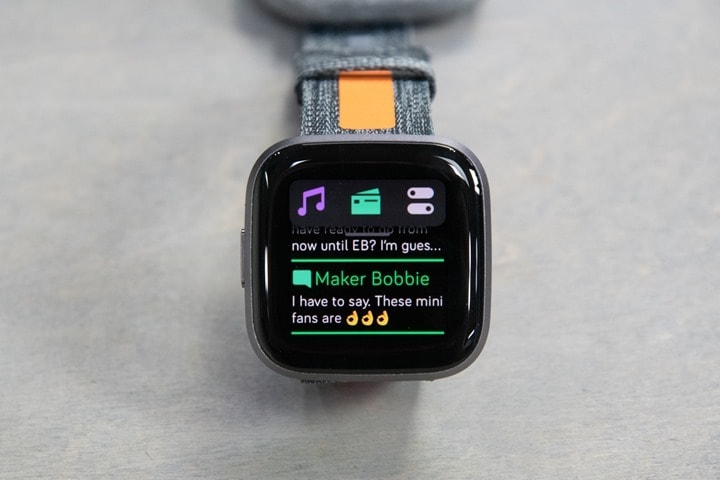






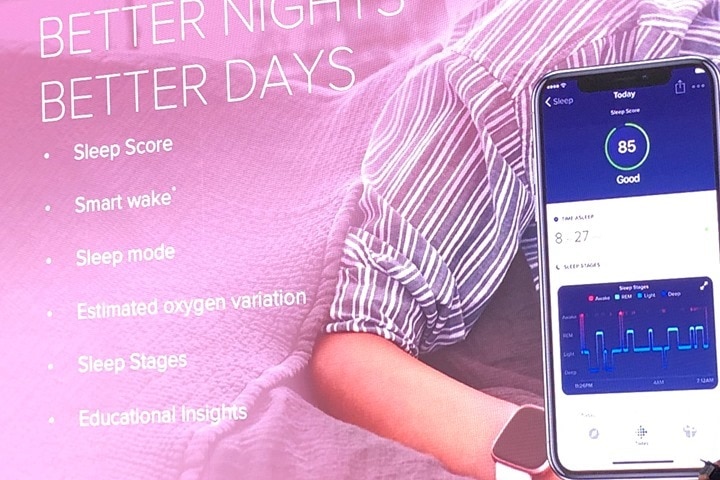

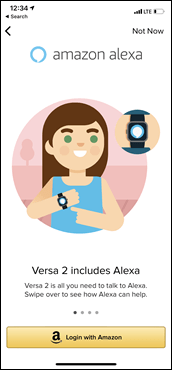







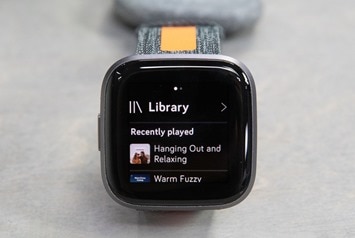








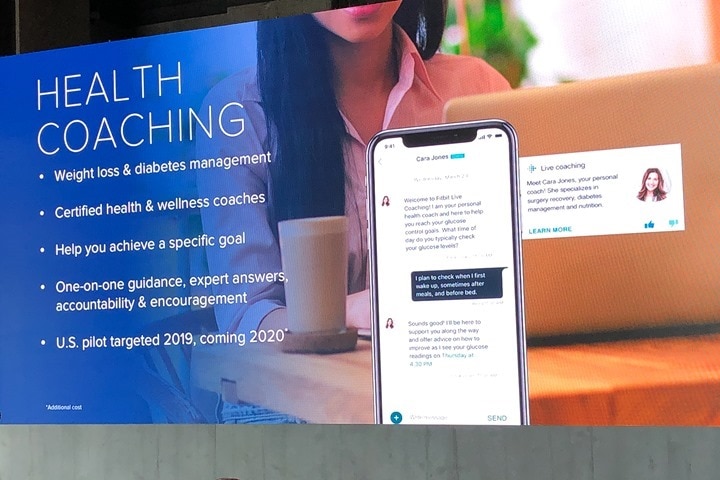






















I’m curious to know when the smart awake feature will be available?
I’ve had the new UI now for nearly 3 months which I do actually like and I’m even trying out the premium membership (haven’t seen much value from that though so unless something amazing comes in the next month I’ll cancel)
They’re saying September.
Recco is not for backcountry skiers, and noone in the backcountry will have the correct tools to locate a recco reflector.
You need a transceiver for that. Recco helps with body recovery, or side country skiers at resorts that are equipped with the search tools.
If not rescued in <10mins with a burial, survivability rate drops to almost nil:
link to wemjournal.org
Generally speaking backcountry as a term is used for anything beyond the ski resorts ropped boundaries (US terminology anyway). Sure, things like sidecountry, slackcountry, etc.. are more nuanced – but not for what we’re talking here. Given the audience for Fitbit, it’s pretty much normal cross-over to be slightly out of bounds. In which case, given the number of Recco equipped resorts, it actually could be helpful.
Obviously, having the right gear (everyone in the party) to go beyond those boundaries is more ideal.
Did I miss the price? How much is it?
$199 – same as before, but now with Fitbit Pay built in.
You don’t seem to mention the price anywhere on the article. It’s probably around 199.99 since you talk about competitors in that price range…
Sorry, thought it was in there. Added it towards the top. But yeah, $199.
” I say ‘mainstream’, because while there are plenty of no-name Bluetooth Smart scales on Amazon, most of them don’t integrate into the apps you already use. ”
There are, or course, also premium scales that don’t do those things. Garmin and Polar for instance. No, I’m not making any particular point other than highlighting this again in the hope of embarrassing those companies into either being open to external weight data or making their scales useful outside their own platforms.
I think that Garmin still does sync weight to MyFitnessPal….so there’s that at least. And I believe that any app can receive weight updates via the API from them too (if that app is enrolled).
The challenge is getting those apps to take advantage of that.
The MFP integration with garmin works for some people, for others (like myself) it does not…
link to myfitnesspal.desk.com
“Bug: Unable to link MFP and Garmin Connect from either side.”
The thing that stood out most for me was the pint of ice cream!
No off-line Spotify? Hummer!…
Why? Hardware limited? Or more likely some licensing issue? (Spotify or Fitbit or both to blame?)
Cheers
It’s a good question – and nobody seems to want to spill the beans.
However, if I turn on the ‘way back’ machine to a few years ago when I sat down with James Park (CEO of Fitbit) and we discussed this very thing, it wasn’t for lack of desire on Fitbit’s part to get Spotify onboard.
I don’t know if the gap between Fitbit and Spotify is technical or leadership related. But if I had to guess, I’d guess strongly that it’s Spotify holding out for some reason or another.
I suspect the Fitbit analysts you mention are right and reflect/lead the market consensus. Look athis link to the 5-year share price link to google.com..81i8k1l3.2761.4677.0.5045.9.9.0.0.0.0.80.615.9.9.0….0…1c..64.finance-immersive..0.9.611…81j81i5k1.0.TCrvFjYj3a8#scso=_CapmXc-sGsz5gQbF0ZSYDA6:0
Fitbit absolutely DO recognise the lower prices of the Apple Watch and, indeed, specifically highlighted a discount-based strategy at the start of this year in some of their formal communications. Unfortunately that somewhat backfired when they later discovered that many of their customers didn’t want every cheap-as-chips option.
#Teetering
Oh yeah, I’m not saying I’d want to be a Fitbit investor – god no.
(Side note: I don’t hold stocks/investments in any companies I review)
However, my comment was more aimed the constant ‘sky is falling’ aspect of Wall Street against Fitbit in terms of product sales. If we look at that chart, no doubt – they peaked in 2018, right as Apple started stepping onto the scene: link to statista.com
But given how many legit competitors came on the scene at that time period – including Garmin, Samsung, Huawei, Xiaomi, and most notably Apple – I think it’s actually pretty impressive they’ve only lost the amount of unit volume they did. Just my two cents.
Fitbit as a company has been losing money every year since 2015. Their stock price has nose-dived from a Summer 2015 price of over $47/share to where it sits today at $3/share.
Even if device sales peaked in 2018 (which I’ll take your word on, since I don’t have access to Statista at the moment), revenue slipped from a peak of $2.169B in 2016 to $1.512B in 2018. So if device sales peaked in 2018 it was only because a reduction in sales prices of the units, which actually led to LESS revenue. FitBit has had to drop their pants (probably due to the lackluster product offering, just my opinion) in order to maintain that #2 wearable status.
Fitbit is going to struggle moving forward. The poor performance of the budget options such as Versa-lite have left the company with excess, unsellable inventory, which further hurts their margins. FitBit as a company has done well to have very little debt, and healthy amount of cash on hand. These two factors are keeping them alive, but with increasingly interesting (and cheaper) offerings from others, I am not sure what Fitbit’s path is moving forward. Garmin, Polar, and Suunto seem to be leading the charge on innovation, and Apple, Samsung, and Android have more and more full market coverage including budget options.
What does FitBit have? They HAD the coolness factor of competing against friends in step challenges. Unfortunately for them, as we’ve seen with the switch from Myspace to Facebook, to Instagram, these sorts of fads only lasts so long, and as the novelty wears off people will switch to the platform that offers them something more or costs less.
I think it all boils down to something Ray has said quite often… “make cool shit!”
so on top of spending $300+ dollars, I have to pay for a subscription service for “advanced” stuff.
Yea… no.
Where do you see $300? It’s $199.
And you don’t “have to pay” anything extra.
Looking closely at some of your pictures the display itself looks as if it might be rounded in the corners. The Versa 1 display is a square. And the 2’s display might be slightly larger side to side, although not necessarily corner to corner. A non-black background color would reveal all ;)
The topmost photo seems to have square corners in the different shades of black, it’s just that the curvature of the cover glass/crystal does make things look rounded.
Since this is an OLED, any non-black background is going to use more power than just leaving those OLEDs turned off. So yeah, black background for power savings.
A picture on TechRadar confirms the display is square not rounded. TechRadar also says “Fitbit has yet to confirm the exact specs of the display, but we know it’s 8% bigger than the last-gen device….” I don’t know how they know it’s 8% bigger but I assume they know what they are talking about.
I might be in the minority here, but every time I see a device that includes Alexa or something similar, it’s a huge turnoff.
I agree. I don’t want any ‘assistant’ listening in. If I get this I will likely super glue over the mic. Corporate wellness discount I get a new FitBit every two years, so actually quite likely to get this. Prior FitBit Charge 2 just but the dust (FitBits don’t last very long, that was my third in total).
$200. No GPS? The good stuff locked behind a $9 dollar a month subscription service? Build quality that does not out last the warranty?
You will likely get one replacement, but they will not replace that replacement when it dies in a few months. Fitbit is not a company people should be doing business with.
Apple isn’t all that great in customer service either. I had a iwatch 3 and developed a skin rash from the band and base of the watch. Contacted Apple “customer service “ and was given the runaround.. They wouldn’t take the watch back, no apologies nothing from them. I’ve purchased other Apple products and I’m done with them. So I purchased a Fitbit Versa 2, like it better then the iwatch 3 and it costs less..
Just out!
Fenix 6:
link to buy.garmin.com
dcr, were is your hands on? :)
My full review is here: link to dcrainmaker.com
:)
how tough is this screen? I still wear my venerable Charge 2 because in my weight workouts I can slam heavy kettlebells against it (and do, daily) with no ill-effect. I can’t wear my Apple Watch because I would instantly smash the screen… I’m all about an upgrade, but this is a sticking point for me, and probably a lot of other people who do weighted functional-fitness type workouts.
Do you know if the sleep metrics will sync across to Training Peaks? Further to that, do any wearable devices have sleep metrics that sync to Training Peaks. It’s hard to tell when you look at companies sites. They only talk about workout syncs.
USD 50 for the Aria air sounds good. I hope they release in Australia before Christmas for under AUD 100.
Are straps any easier to remove and attach than on the original Versa?
Is it any easier to change a strap on the new Versa?
I guess only time will tell if these fail left and right just on owners like the Ionic and Versa. It would surprise me none if they do.
If I ask Alexa where the closest Italian Restaurant is, I get a response that says it can’t get my nearest location right now and to check location settings. Is this not something the Versa 2 can handle?